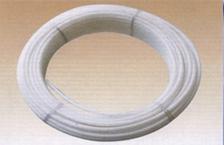1. The inner wall of PE agricultural irrigation pipe is smooth, with small fluid resistance and no rust. It does not require strict water quality and does not accumulate scale.
2. PE agricultural irrigation pipe has good low temperature resistance and can be used normally in a wide temperature range of -20℃ to 40℃.
3. Good wear resistance. When used as a movable branch pipe, dragging on the ground will not affect the service life of the pipe material.
4. Adding special additives to prevent damage to buried pipes by rodents and other gnawing animals.
5. The pipe has stable performance, good sanitary performance, does not affect water quality, and does not affect the non-toxic and pollution-free of crops.
6. PE agricultural irrigation pipe has excellent aging resistance, and its performance can be guaranteed under long-term exposure to sunlight or burial.
7. Materials processed into PE agricultural irrigation pipes dissolve multiple nutrients during the water conveyance process, making the water nutritious, increasing nutrient accumulation in crops during photosynthesis, and providing sufficient nutrients.
8. The addition of mineral elements mineralizes the water, such as manganese as an activator, which can promote starch decomposition, seed germination, growth, and increase the organic and mineral content of crops.
9. The addition of antibacterial agents to the pipe can inhibit Escherichia coli at 1000/L, ensuring the safety of agricultural product consumption.
10. PE pipes have good toughness, can be bent, coiled, and conveniently stored.
11. PE agricultural pipes have excellent resistance to rapid crack propagation and slow crack growth, as well as good resistance to hanging.
12. PE agricultural irrigation pipe has good corrosion resistance and stable performance. When transporting water with injected fertilizers, it will not be corroded and will not destroy the nutrients in the fertilizer, ensuring the production needs of crops.
13. Particularly resistant to chemical substances, especially resistant to seawater intrusion, suitable for coastal marshy areas, strong adaptability to soft ground, suitable for seawater aquaculture, irrigation waterways, farmland consolidation, etc. The use of polyethylene pipelines greatly saves labor and equipment materials for installation, reduces operation and maintenance costs, and extends service life, thus having lower comprehensive engineering costs.
Polyethylene PE100 pipe standard □ Executing GB/T 13663-2000, ISO4427-1996. □ Selecting HDPE or MDPE materials of two grades, PE80 and PE100, for production, the pipe material can be used for pressure water delivery with a temperature not exceeding 40°C and for the transportation of drinking water. □ The hygiene performance of drinking water pipes complies with the provisions of GB/T17219. The excellent quality of polyethylene PE100 pipes ◇ Long service life ----- Polyethylene pipes can be safely used for over 50 years under rated temperature and pressure conditions. ◇ Excellent corrosion resistance ----- except for a few strong oxidants, it can withstand the erosion of various chemical media; no electrochemical corrosion. ◇ Excellent abrasion resistance ----- when transporting mineral slurries, the abrasion resistance of PE pipes is more than 4 times that of steel pipes. ◇ Good hygiene performance ----- no heavy metal salt stabilizers are added during the processing of PE pipes, the material is non-toxic, does not form scale, does not breed bacteria, and effectively solves the secondary pollution of urban drinking water. ◇ Good impact resistance ----- PE pipes have good toughness, high impact resistance, and direct pressure from heavy objects will not cause the pipe to rupture. ◇ Reliable connection performance ----- the strength of the hot-melt or electrofusion joints of PE pipes is higher than that of the pipe material itself, ensuring the safety and reliability of the joints. ◇ Good construction performance ----- light weight of the pipeline, simple welding process, convenient construction, and low overall engineering cost. Performance of polyethylene PE100 pipes (1) 20°C hydrostatic strength (8.0Mpa circumferential stress, 100h) does not rupture, no leakage. (2) 80°C hydrostatic strength (3.5Mpa circumferential stress, 165h) does not rupture, no leakage. (3) 80°C hydrostatic strength (3.2Mpa circumferential stress, 1000h) does not rupture, no leakage. (4) Elongation at break, ≥350% (5) Longitudinal shrinkage rate (110°C), polyethylene water supply (HDPE) pipes
Characteristics
1 Long service life: under normal conditions (-20°C to 70°C), the service life can reach 50 years;
2 Good hygiene: PE pipes are non-toxic, do not contain heavy metal additives, do not scale or breed bacteria, solve the secondary pollution of drinking water, and comply with the safety evaluation regulations of GB/T17219-1998;
3 Resistant to corrosion by various chemical media;
4 Smooth inner wall, very low friction coefficient, strong medium passage ability and excellent wear resistance;
5 Good flexibility, high impact resistance;
6 Light weight, easy transportation and installation;
7 The unique hot melt butt joint technology makes the joint strength higher than that of the pipe material, ensuring the safety and reliability of the joint;
8 Simple welding process, convenient construction, and low overall engineering cost.
Performance
1 Elongation at break ≥350%
2 Longitudinal shrinkage rate (100°C) ≤3%
3 Oxidation induction time (200°C) ≥20 min
4 Weather resistance (after the pipe has accumulated 3.5GJ/m2 of aging energy)
80°C hydrostatic strength (165h) does not rupture, no leakage
Elongation at break ≥350%
Oxidation induction time (200°C) ≥10 min
5 Hydrostatic strength test
20°C hydrostatic strength (100h) does not rupture, no leakage circumferential stress
80°C hydrostatic strength (165h) does not rupture, no leakage circumferential stress
80°C hydrostatic strength (1000h) does not rupture, no leakage circumferential stress
Applications
Urban and rural water supply pipes, farmland irrigation supply pipes, drip irrigation pipes;
Sewage treatment pipelines, used as sewage collection pipes in garbage landfills, perforated pipes, bi













